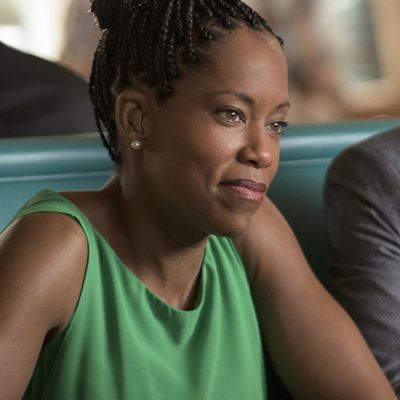
Season one of The Leftovers split audiences. Some people loved its bleak, meditative qualities; others were supremely put off by its opacity and dreariness. The season was violent, ruthlessly so, nicotine-drenched and defiantly nebulous. The early episodes sprawled, but as the season wore on, the focus tightened, and the final two episodes seemed invested in character in ways the earlier episodes hadnÔÇÖt always. But the show also reached an almost catastrophic density of misery, and the destruction of the season finale was both a relief and its own puzzle: What now?
Now The Leftovers comes back for season two, with a new setting, lots of (but not only) new characters, and its sense of dread intact. But as someone who found season one often tedious and frankly pretty far up its own ass, I was pleasantly surprised by how taken I was with the new installments. (HBO made three episodes available to critics.) The show relocates to Jarden, Texas, the only town in the U.S. whose population was untouched by Sudden Departures. We meet a family there, mom Erika (Regina King, just the best), dad John (Kevin Carroll, terrific), and a teenage son (Jovan Adepo) and daughter (Jasmin Savoy Brown). Like everything else on The Leftovers, the town is normal but not: Teens play softball and go swimming, but thereÔÇÖs also an unusually high amount of seeming charlatanry. ThereÔÇÖs a profound undercurrent of violence, but also Leftovers-style magical realism. Jarden is uncanny.
The new episodes are as unsettling, violent, and vague as season oneÔÇÖs. But theyÔÇÖre also less despairing and more anchored. The season kicks off with one of the most out-there ten-minute sequences in modern television, one that would be equally at home on The Twilight Zone as it would in the pages of National Geographic. ItÔÇÖs both incredibly literal and bafflingly removed from the rest of the action of the show: ItÔÇÖs an origin story, but whose?
The Leftovers┬áis not big on clear causes and effects. I hesitate to call it nonlinear because it does adamantly move forward in time, but itÔÇÖs non-domino, at least. What caused the Departures? WeÔÇÖll never know. What effects did the Departures have? Well, weÔÇÖll never quite know that either, because thereÔÇÖs no control group ÔÇö┬ámaybe NoraÔÇÖs whole family would have died in a car accident, or maybe they would have all lived happily ever after and died of gentle old age while surrounded by loved ones. Maybe Laurie would have joined a cult anyway, and maybe Tommy would have fled Mapleton regardless. Season two seems a lot more comfortable with this idea ÔÇö the show itself but also the characters, who all seem to be doing more this season, rather than just letting fates befall them.
The show hasnÔÇÖt reinvented itself ÔÇö Kevin, Nora, Jill, Tommy, Laurie, and many other familiar faces are back, in addition to the new Jarden characters. It did, however, get a lot more interesting, more bold, and more comfortable implicating viewers in its cynical take on humanity: Episode one includes full-frontal nudity from female characters who are in high school, which the show doesnÔÇÖt dwell on but does pointedly include. Congratulations, Leftovers viewers, youÔÇÖre complicit in┬áour garbage Earth, where teen girlsÔÇÖ naked bodies are just part of the mysterious atmosphere.┬áWell, their garbage Earth. A garbage Earth that is created in reality and reflected in fiction.
Season one of The Leftovers was occasionally exhausting. The early arc of season two is as interesting as anything on TV in ages ÔÇö┬áabsorbing, complicated, textured. The composition of the show feels more stable, too. For all I know, this is all a setup thatÔÇÖs going to yank the rug out, throwing characters and viewers alike ass-over-teakettle into the unknown. And if that disruption is anywhere near as good as these first three episodes, thatÔÇÖll be just fine.

